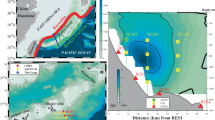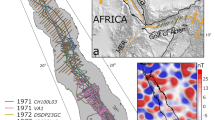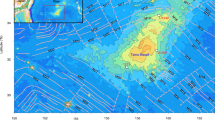Abstract
VEMA seamount lies in the South Atlantic Ocean about 1,000 km west-north-west of Cape Town, at 31° 38′ S., 8° 20′ E. It was discovered by the R.V. Vema (cruise V-16) in 19591 and visited again by the R.V. Conrad (cruise (C-8) in 1963. On both visits magnetic and bathymetric measurements were included in the shipboard geophysics programme. A third, and more extended, visit was made to this location by a group from the University of Cape Town2.
This is a preview of subscription content, access via your institution
Access options
Subscribe to this journal
Receive 51 print issues and online access
$199.00 per year
only $3.90 per issue
Buy this article
- Purchase on Springer Link
- Instant access to full article PDF
Prices may be subject to local taxes which are calculated during checkout
Similar content being viewed by others
References
Heirtzler, J. R., Tech. Rept. 2, Contract CU-3-61 Nonr Geology, Lamont Geological Observatory (1961).
Simpson, E. S. W., and Heydorn, A. E. F., Nature, 207, 249 (1965).
Talwani, Manik, Geophysics, 30, 797 (1965).
Author information
Authors and Affiliations
Rights and permissions
About this article
Cite this article
HEIRTZLER, J., HADLEY, M. Magnetic Anomaly over Vema Seamount. Nature 212, 912–913 (1966). https://doi.org/10.1038/212912a0
Issue Date:
DOI: https://doi.org/10.1038/212912a0
Comments
By submitting a comment you agree to abide by our Terms and Community Guidelines. If you find something abusive or that does not comply with our terms or guidelines please flag it as inappropriate.



